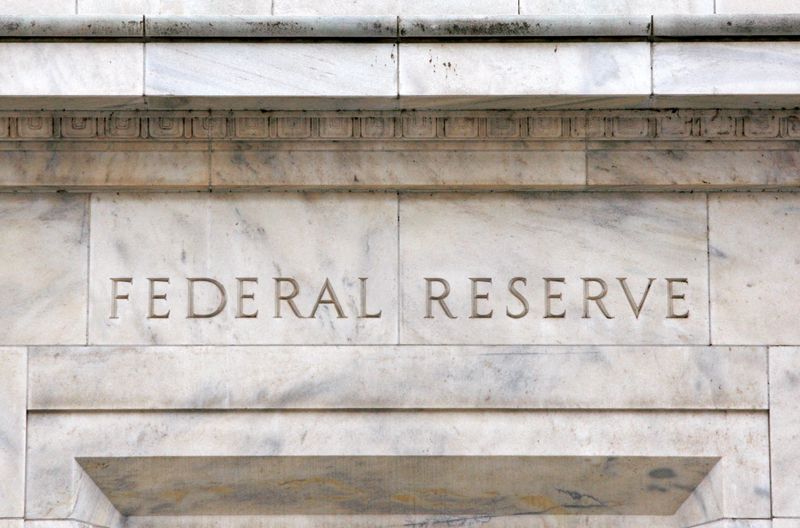NEW YORK (Reuters) - Federal Reserve policymakers agreed they needed to move to a more restrictive policy stance - and then maintain that for some time - in order to meet the U.S. central bank's goal of lowering inflation, a readout of last month's two-day meeting showed on Wednesday.
The minutes of the Sept. 20-21 meeting showed many Fed officials "emphasized the cost of taking too little action to bring down inflation likely outweighed the cost of taking too much action."
Many officials said they had raised their assessments of the path of interest rate increases that would likely be needed to achieve the committee's goals.
STORY:
MARKET REACTION:
STOCKS: S&P 500 extended a slight gain and was up 0.15%, to 3,594.34 BONDS: U.S. Treasury 10-year yield eased price was last up 11/32 to yield 3.8962%, down from 3.939% late on Thursday.FOREX: The dollar index turned 0.141% lower
COMMENTS:
BOB MILLER, HEAD OF AMERICAS FUNDAMENTAL FIXED INCOME, BLACKROCK (by email)
"The release today of the Federal Reserve’s September FOMC meeting minutes reinforced the overall hawkish message delivered via the statement, the dot plot and the Chair’s press conference. The Fed wants tighter domestic financial conditions in order to combat persistently high levels of inflation and is determined to achieve that outcome. Broadly speaking, markets have adjusted to this reality, and various measures of financial conditions have reached new highs in terms of restrictiveness."
"Not only is the change to financial conditions large and abrupt relative to history, but the levels of key inputs, like real interest rates, investment-grade yield-to-worst, the USD and mortgage rates (see graphs at bottom), have now reached levels not seen in more than a decade. And while credit spreads remain below the recessionary levels witnessed in previous periods, the all-in cost of capital has moved significantly higher, given the rise in risk free rates."
JUAN PEREZ, DIRECTOR OF TRADING, MONEX USA, WASHINGTON
“It's clear that they're (Fed) going to continue increasing interest rates because it seems like they feel that if they don't do that, inflation could really get out of control. So by basically looking at the minutes there's really no major surprise. Ultimately, they do think that you need to reach some very high interest rates in order to really cool down the economy. Unfortunately, that's going to be very, very dollar positive usually, in theory.”
“So far it's been kind of dollar negative. So maybe there is a bit of hope within the minutes that basically officials are weighing the risk of going too hard or going too high on hiking, but that's not the number one concern right now. Number one concern continues to be inflation. And as long as the United States and the Federal Reserve are willing to fight that, then that's going to be good for the dollar.”
GEORGE BALL, CHAIRMAN, SANDERS MORRIS HARRIS, HOUSTON (by email)
"Wednesday's minutes report confirms the Fed's commitment to fighting inflation. The Fed has to keep talking about and implementing additional rate hikes, otherwise all it’s done to fight inflation up until now is wasted baggage. While inflation has peaked, the path to a 2% inflation rate will be long, windy and bumpy."
"The Federal Reserve's current tone suggests it is committed to raising interest rates until the snake of inflation is dead."
"We believe market sentiment will continue to remain negative until mid-November and at that point, Federal Reserve officials will likely start to signal that a pause in rate hikes is on the horizon sometime in early 2023. That will be the tipping point where stocks start to rise again."
"While this Fed pivot may mean that the economy is in a recession, markets look ahead by about 6-months and a belief that there won't be more rate hikes after early 2023 will psychologically return the ascendancy of the bull."
CHRIS ZACCARELLI, CHIEF INVESTMENT OFFICER, INDEPENDENT ADVISOR ALLIANCE, CHARLOTTE, NC
"For the most part there's nothing to earth shattering in the Fed minutes. The fact they're saying that there is more of a risk doing too little than doing to much maybe reinforces the idea that they're more likely to continue to raise rates at a quick pace."
"There were some members talking about calibrating their response. That could mean the Fed is aware that if they raise rates too quickly that could cause a lot of economic damage. They've been talking about how they're willing to risk a recession in order to bring inflation back under control but its possible that as the recession risks increase they may lose their nerve a little bit."

"The market is looking ahead to the CPI release tomorrow. There's still some bulls out there hoping that if there's a slowing of inflation it will give the Fed some reason to slow down the rate increases or potentially pause them."
"The bulls are hopeful inflation will start cooling more quickly than expected and the Fed won't go as high as some people fear. The bears believe the fed is going to continue to go higher, raise rates to a pretty high level and keep them there for an extended period of time and cause a recession, potentially a bad one."